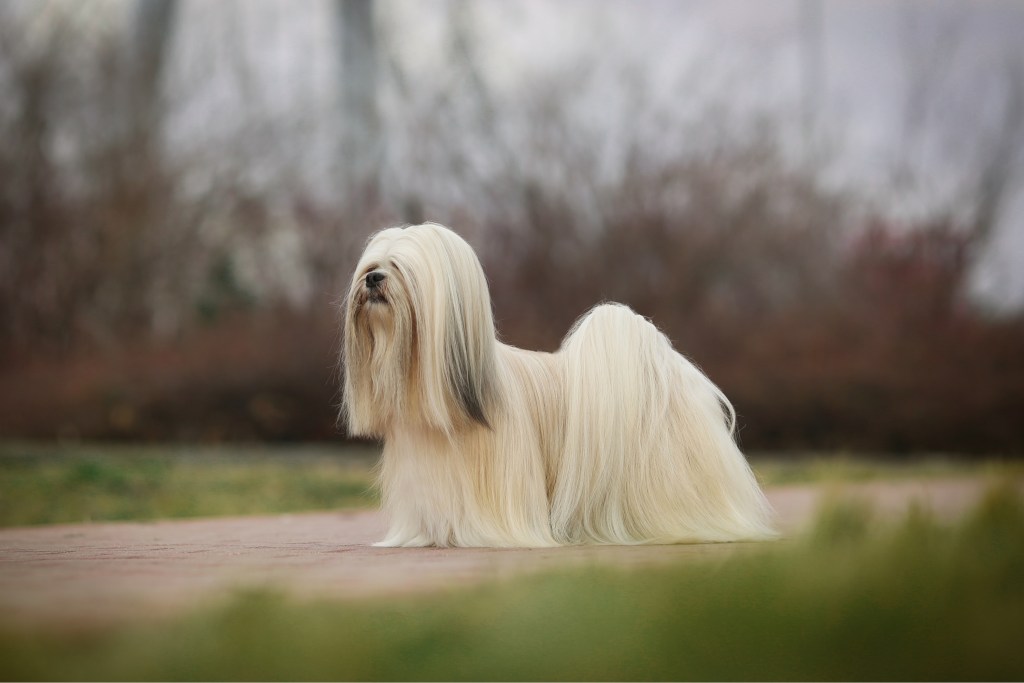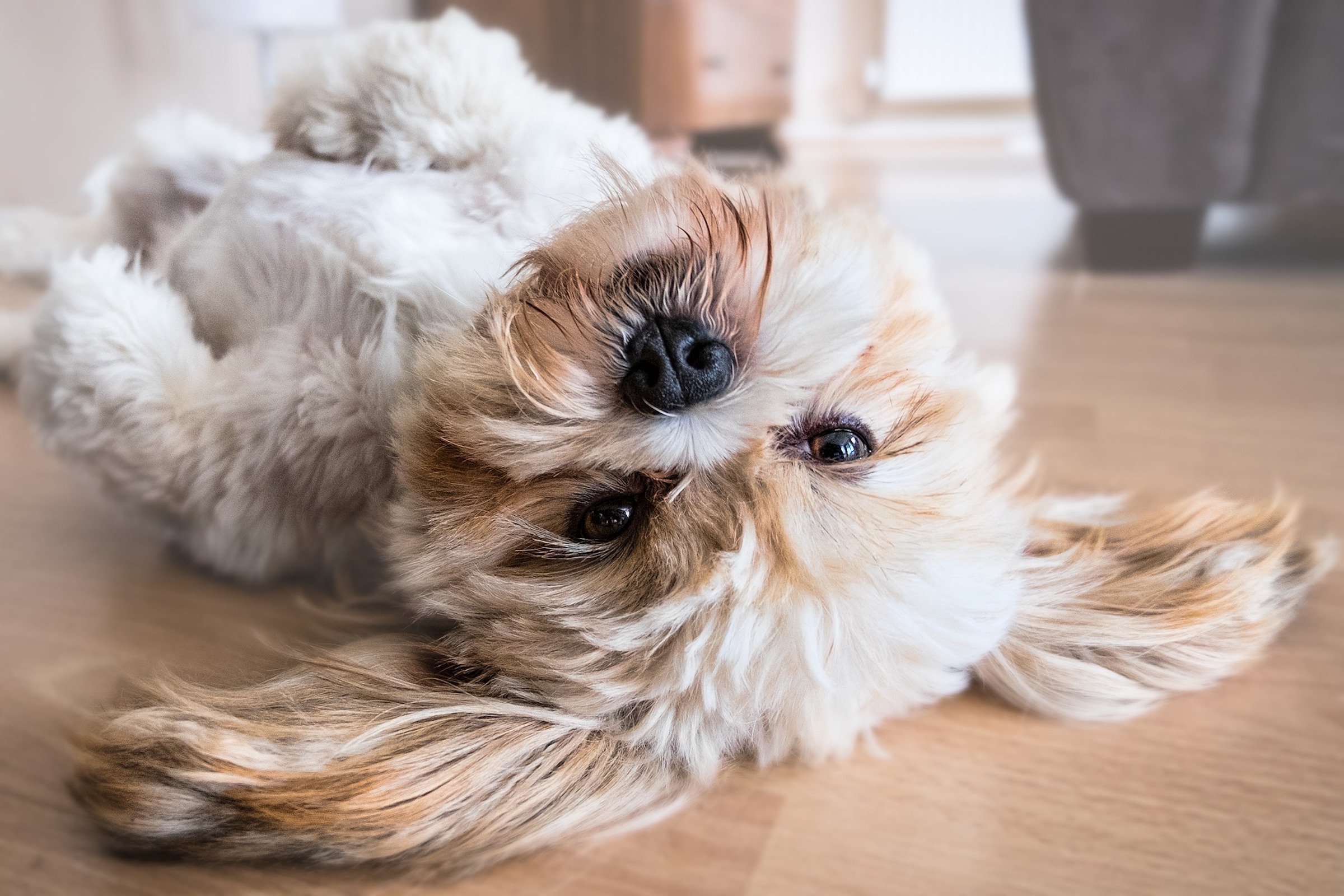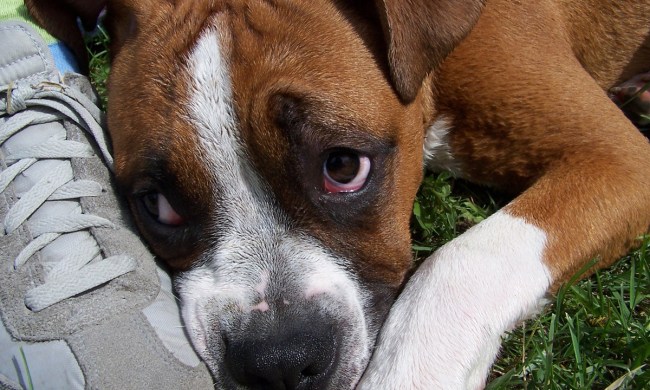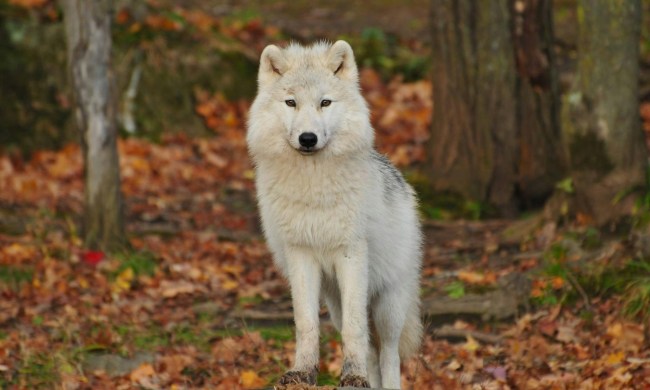Lhasa apso grooming can be just as versatile as the styles you see on any other long-haired breed, such as the poodle. Still, deciding which haircut to give your beloved pup is easier said than done. You can flip through photos like when you’re looking for your own next hairstyle, but there’s more than aesthetics to keep in mind when it comes to grooming your pet. The details of trimming your Lhasa apso are up to you!
Two of the most popular looks for this sweet breed are their classic long hair or a stylish and helpful puppy cut — but how do you know which is best for your buddy? Here are some of the basics — pros, cons, and details — of these two popular haircuts.

Long hair
When many first meet this compact, comedic breed, they picture the long and regal coats these pups are known for. What’s not as obvious, however, is the effort that goes into this famous look. Still, many owners love bonding with their dog over daily care, so it’s up to you to decide if it’s worth the work. Here’s what to know.
What is it?
A long coat — also called a full coat — is a characteristic look for this regal Himalayan breed. With this style, their coat on the chest and sides will fall all the way to their paws, while the fur on the face, ears, and mustache is also left long. The coat is often straight or slightly wavy and can be rather thick.
This style is both cute and iconic
Talk about adorable! A Lhasa apso in full coat is all kinds of cute, especially for pet parents who appreciate bows and other hair accessories (as long as your doggo doesn’t mind, of course!). It’s a look that’s super customizable, so your pup can wear her personality on the outside.
This hairstyle has history and significance to the breed, especially if you’re interested in showing your dog at any kind of event. There will be absolutely no question of your dog’s breed — or her charming personality, for that matter.
This style requires a lot of maintenance
While both of these styles require regular maintenance both at home and at your favorite groomer’s, long hair on a Lhasa will need the most care. In addition to regular haircuts — best left to the groomer every one to six weeks depending on your dog’s activities and the environment — you’ll want to have regular brushing sessions to keep tangles at bay. Luckily, there are coated metal-pin brushes for your daily detangling, slicker brushes for undercoats, and dog coat detanglers to help you get the job done.
Long coats tangle and mat much easier, which can leave your fur baby at risk for all kinds of skin irritation, so daily maintenance cannot be overlooked. It may be necessary to clean your dog’s eyes or paws regularly as well, so it’s a smart idea to get your Lhasa apso used to being touched, brushed, and washed.

Puppy cut
The puppy cut is a popular alternative to a full-coat hairstyle, though every groomer does it a little differently. It’s never a bad idea to ask your groomer what their puppy cut consists of, or if they can show you a picture.
What is it?
The Portland Animal Clinic describes the puppy cut as a style that leaves a dog’s fur the same even length — generally 1–2 inches — all over their body. Whether your pup’s ears, mustache, and tail are included can vary, but you can always make a request if you like a specific look. Sometimes, there will be more volume (aka fluff) around the feet as well, like your traditional poodle look.
Maintenance is much easier
Giving your Lhasa apso a puppy cut can make maintenance between grooming appointments as easy as possible. Regular brushing is still required since shorter coats can still mat or tangle, especially when wet. You may not need to bathe your dog quite as often, though.
Shorter hair also means less shedding, though Lhasa apsos don’t shed much to begin with. It can be a quite noticeable difference for your dog, though, since the puppy cut is much cooler during the summer months.
Different groomers have different approaches to puppy cuts
Because the term “puppy cut” is vague, you can sometimes get a haircut you didn’t want. This is why communication between the groomer and the pet parent is so important! If talking about inches or grooming terms is confusing, you can always find photos of what you’re looking for — as long as it’s reasonable, of course.
Although you may not have to spend as much time brushing your pup every day, she won’t have that signature Lhasa apso look that comes with a long coat. It’s all about compromise!
With long, luscious fur like your Lhasa apso has, the grooming opportunities are endless. Think about the kind of look you like on your dog, how your buddy would be the most comfortable, and what kind of daily care you’re willing to commit to. If you’re still in doubt, your groomer will be happy to discuss these options in even more detail so you know you’re getting what you want. (Or what your fur baby wants!)



